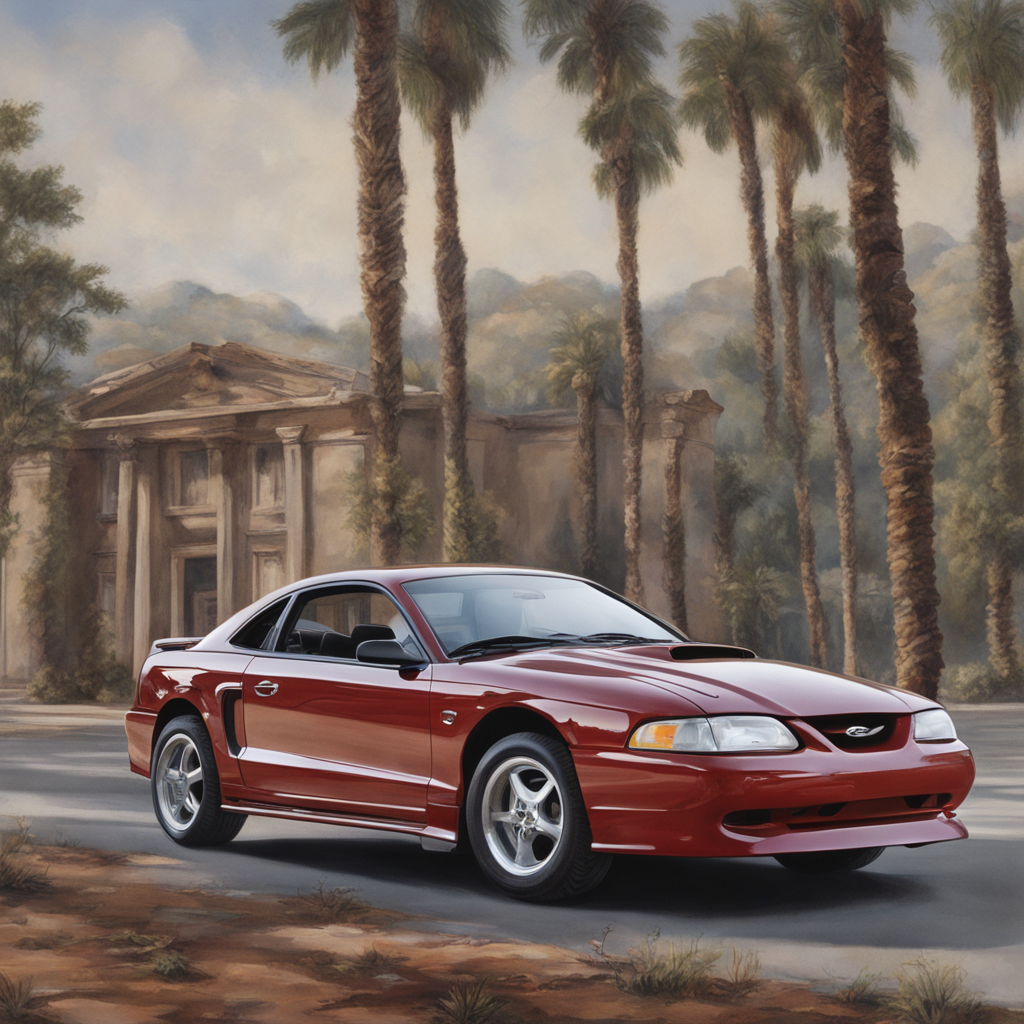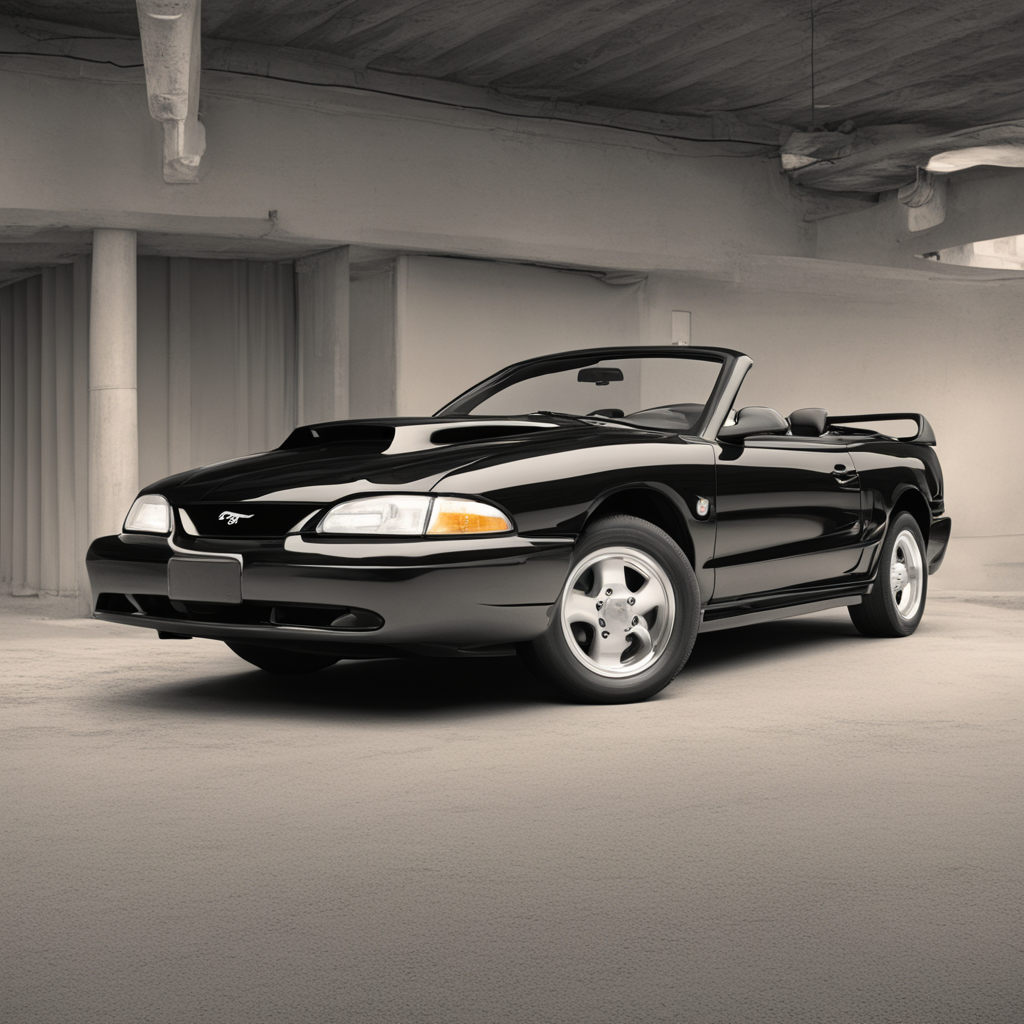Celebrating a Legacy: The ‘94 Mustang’s Impact on the Automotive Industry
In this article, we’ll delve into the history, design, performance, and significance of the 1994 Ford Mustang model year. From its introduction to market trends, engine options, transmission choices, and collectibility, we’ll cover everything you need to know about this iconic American muscle car.
Updated November 13, 2023
Introduction
The Ford Mustang has been an integral part of American automotive culture since its debut in 1964. The 1994 model year marks a significant milestone in the Mustang’s history, as it underwent a major redesign, introducing new features and technologies that would set the stage for future success. In this article, we’ll explore the significance of the ‘94 Mustang, its design and styling, performance specifications, color options, trim levels, and more.

Brief History of the 1994 Ford Mustang
The fourth-generation Mustang (SN95) debuted in 1993 as a 1994 model, with a new chassis, improved aerodynamics, and enhanced safety features. This marked a major departure from its predecessor, the Fox-body Mustang, which had been in production since 1979.
Significance of the 1994 Ford Mustang Model Year
The ‘94 Mustang’s redesign was crucial for the car’s survival in an increasingly competitive market. With the introduction of new features like anti-lock brakes (ABS) and a more modern interior design, the Mustang appealed to a broader audience while maintaining its core appeal as a performance-oriented muscle car.
Design and Styling of 1994 Ford Mustang
The ‘94 Mustang’s exterior design was characterized by a sleeker, more aerodynamic profile, with a focus on improving airflow and reducing wind noise. The car featured a new grille, updated headlights, and a reworked rear valance with integrated fog lights. The interior received a significant overhaul, with improved ergonomics, updated gauges, and premium materials.
Color Options and Trim Levels
The 1994 Mustang was available in an array of colors, including:
- Bright White
- Championship White
- Garnet Red Metallic
- Performance Red
- Deep Berry Pearl
- Tawny Olive Metallic
Trim levels included the base model, GT, and LX. The GT received unique styling cues, such as a distinctive grille, fog lights, and 17-inch alloy wheels.
Performance and Specifications
The ‘94 Mustang was offered with two engine options:
- 3.8L V6: A SOHC (Single Overhead Camshaft) 3.8-liter V6 engine producing 145 horsepower and 180 lb-ft of torque.
- 5.0L V8: A DOHC (Double Overhead Camshaft) 5.0-liter V8 engine generating 215 horsepower and 280 lb-ft of torque in the GT trim.
Transmission options included a standard 5-speed manual or an optional 4-speed automatic with overdrive.
Horsepower and Torque Ratings for the 1994 Ford Mustang
- 3.8L V6: 145 horsepower @ 4000 RPM, 180 lb-ft of torque @ 2500 RPM
- 5.0L V8 (GT): 215 horsepower @ 4250 RPM, 280 lb-ft of torque @ 3000 RPM
Transmission Options
- 5-speed manual
- 4-speed automatic with overdrive

Variants and Special Editions
The ‘94 Mustang offered a range of variants and special editions, including:
- GT: A high-performance model featuring a unique suspension setup, 17-inch alloy wheels, and a distinctive grille.
- LX Convertible: A convertible version of the LX trim, featuring a power-operated top and premium interior appointments.
Fastback, Convertible, and Coupe Body Styles
The ‘94 Mustang was available in three body styles:
- Fastback: A sleek, 2-door coupe with a fixed rear window.
- Convertible: A soft-top convertible model with a manual or automatic transmission.
- Coupe: A 2-door sedan with a fixed roof.
GT Equipment Package
The GT package added unique features like:
- Performance-tuned suspension
- 17-inch alloy wheels
- Unique grille and fog lights
- Premium interior appointments
Impact on the Automotive Industry
The ‘94 Mustang’s redesign helped to revitalize the car’s image, appealing to a broader audience while maintaining its core appeal as a performance-oriented muscle car. This marked a turning point for the Mustang, paving the way for future success.
Sales Figures and Popularity
The ‘94 Mustang saw modest sales gains compared to previous years, with over 120,000 units sold in the United States alone.
Influence on Competitor Models
The ‘94 Mustang’s redesign influenced other muscle car offerings from competitors like Chevrolet (Corvette) and Dodge (Challenger).
Collectibility and Value of 1994 Ford Mustang
As a collectible model, the ‘94 Mustang has maintained its value over time. Prices for low-mileage, well-maintained models range from:
- $5,000 - $10,000 for base models
- $8,000 - $15,000 for GT trim levels
- $12,000 - $25,000 for high-performance or rare variants
Buying Guide
When purchasing a 1994 Ford Mustang, look for:
- Low mileage (under 50,000 miles)
- Well-maintained condition with minimal wear and tear
- Original documentation, including the owner’s manual and maintenance records
- A clean Carfax report indicating no major accidents or damage
Conclusion
The 1994 Ford Mustang marked a significant milestone in the car’s history, introducing new features, technologies, and design elements that would set the stage for future success. As a collectible model, it has maintained its value over time, making it an attractive option for enthusiasts and investors alike. Whether you’re looking to own a piece of automotive history or simply want a reliable, high-performance muscle car, the ‘94 Mustang is an excellent choice.

